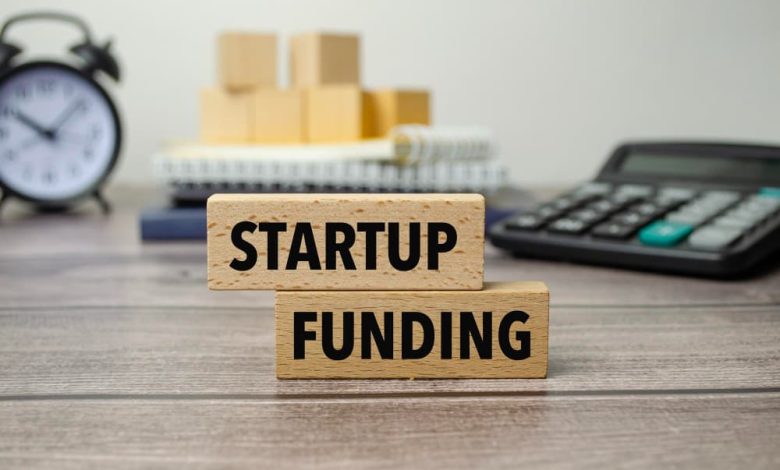What Happens When a Startup Collapses?

Startups are precarious enterprises because they rely on equity funds and debts sourced from hawk-eyed investors. While many ideas are brilliant, implementing them remains a pipe dream. Either because they need too much money, or the market is not ready to embrace certain solutions at a given moment. This can only mean one thing. Closing shop.
According to the United States Bureau of Labor Statistics, 90% of startups fail before they can be listed, and 45% of startups fail as they enter their fifth year in operation. The success of a startup depends on the viability of its model and the relevance of its products.
Tech startups are peculiar for many reasons. Compared to other businesses; when a startup collapses, the biggest question in our minds is – what is next? In this article, we shall be looking at a startup’s afterlife. What happens to its assets, its founders, and its once hopeful investors?
The Signs of Inevitable CollapseMany businesses cannot survive for long because the market is a dynamic playground that demands rebranding, new partnerships, and enterprise shifts. Startups are no different. The prevailing story in last year’s ecosystem was the diminished state of funding. Global startups raised only $285 billion in 2023 compared to $462 billion raised in 2022. In Africa, startups raised only $2.4 billion dropping from $3 billion in 2022.
With investors pulling away from the ecosystem, startups are incapable of exploring new markets and financing their operations. Even the most ambitious of startups cannot survive when funding remains elusive. This situation is further compounded by the macroeconomic difficulties that negatively affect the smooth running of startups.
The term “startup” refers to a company in the early stages of its operations. Startups are founded by one or more entrepreneurs who want to develop a product or service for which they believe there is demand.
Mitchelle Grant, InvestopediaBankruptcyFiling for bankruptcy is the most ominous sign that a startup is about to collapse. It shows that the enterprise is incapable of paying off its debts. When a startup’s liabilities drag it down this route, investors pull out their money before things get worse. And they could only get worse. Customers are unable to trust the business’ ability to deliver.
Slow adaptability When the funding drought hit startups in 2023, some enterprises were unable to re-evaluate their focus and restrategize. When investors are skeptical about the viability of your innovation, it is only reasonable to go back to the drawing board and reshape your goals. Realistic valuations in times of financial crises help a startup secure funding from investors as it reveals a grounded plan.
Many startups that collapsed in 2023 showed a great affinity for attracting funding since their inception. Sendy and 54Gene have attracted millions of dollars in funding since 2020. Before shutting down, 54Gene had raised up to $45 million over two years. Sendy, on the flip side, raised $26 million marking it as one of the most funded startups in Kenya.
Saturated growth Investors in times of financial crisis do not focus on your optimistic plans and expectations. A startup, especially one that has been in operation for some time, must be able to prove its reliability. Many startups last year failed to close Series A or B rounds because investors felt that the startups had not made sufficient progress. 54Gene, for instance, closed its Series B round at $25 million in 2021. The money raised was incapable of enabling them to service Post-COVID difficulties.
Early-stage companies are under pressure to reveal whether their Month-on-month (MoM) growth aligns with their projections. If investors are not convinced that you have penetrated the market fully, they may withhold their money fearing to take that risk. This further complicates your startup’s plans and growth begins to slump. There is no other way but down.
Restructuring their workforce When a startup’s liabilities outweigh its assets, balance is necessary. That is when laying off employees becomes a crucial decision if the startup intends to remain afloat. Cellulant, one of Africa’s oldest startups, laid off many employees last year after it failed to secure $100 million in the Series D round in 2022. Sendy, in October 2022, laid off more than 50 employees as a strategy to cut costs.
Another interesting thing to note is – when a startup expels some senior executives and replaces them with new ones, it could be an indication of the cracks within. Such a startup may not survive as it intends because investors are wary of losing their money in glaringly unstable enterprises.
The Inevitable Downfall: Now what?Several startups last year announced their inability to secure funding for operations. They include: Sendy, Zumi, Marketforce and Copia in Kenya. Other notable ones in Africa include Dash from Ghana, Lazerpay in Nigeria, and WhereismyTransport from South Africa.
However many startups have no remarkable physical assets that could be acquired or confiscated as part of debt repayment. Opening a startup needs a clear mind but losing one also requires tact. So what happens when a startup announces things aren’t rosy anymore?
Looking for Acquisition optionsStartups undoubtedly have quality ideas behind them. While investment may have been a tough nut to crack, other giant companies may be interested in perpetuating the startup under their wing. It happens all the time. Formidable tech companies like Google and Meta have acquired lesser innovations after stand-alone investment proved difficult. Google acquired the cloud storage developer Apigee in 2016 and Meta purchased Oculus VR in 2014. A startup may lose its independence, but a valuable merger could save it from total collapse.
But it is not always the best resolution. The acquirer could decide whether to retain talent or bring in new people to the mix. After a buyout, you may not be part of their intended future.
File for Bankruptcy The cash flow in a startup dries up when founders can’t find sustainable growth or can no longer raise any funds. With debts about to cripple operations, creditors will be filing lawsuits demanding payment. In most cases, founders have no option but to file for bankruptcy. This allows creditors to consider a less-pressurizing repayment plan. Negotiation is tricky, and any mishaps could be the final nail in the startup’s coffin.
Liquidation of Assets When there are no debts to be settled, a liquidation process is undertaken. The founders clear every asset they own, salvaging the money they can from its remains. A tech startup has very few assets as most of its operations depend on an application. But these resources can be sold to other tech companies who could demand a total transfer of rights.
The sale of assets is usually done on impulse and therefore, high prices cannot be fetched in the market. However, the goal of liquidation is not profit but redistribution. With the help of a lawyer, you can terminate your startup, get a good price for its ashes, and move on to other commitments.
Change tactThe startup can also decide whether to continue its operations as a small business. At this point, the startup is not qualified to raise funds from Venture Capitalists because it does not intend to grow explosively as before. A startup is different in the sense that rapid expansion is the goal while a small business is a profitable enterprise that expands from its revenues.
But when there are debts to be settled, continuing your small business may not save you from creditors. Tech innovations work best because revenues are determined by how fast they can break into new markets.
ConclusionStartups fail because their growth ambitions are greater than the revenues they can accumulate. Even older startups could have their goals scattered if they are unable to secure funding in late-stage rounds. While closing shop has many implications for the founders, its investors, VCs, and employees – learning how to navigate the collapse may enable you to pick up a few lessons and even restrategize.



